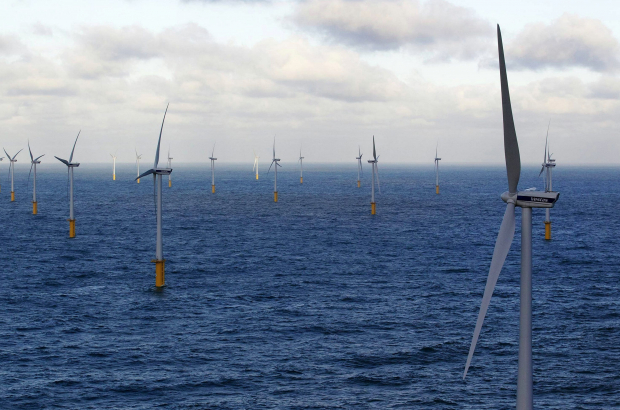- Daily & Weekly newsletters
- Buy & download The Bulletin
- Comment on our articles
Belgian-German electricity connection finally ready to go live
After 10 years of work and at a price of €500 million, the electricity networks of Germany and Belgium are finally connected, thanks to an underground high-voltage line.
This link will ensure a better energy supply to Belgium and will enable a better source of renewable energy through offshore wind turbines in the North Sea and the Baltic Sea. The link will enter service on 18 November.
The official inauguration of the "ALEGrO" project was held on Monday in Aachen. Belgian prime minister Alexander De Croo and German chancellor Angela Merkel were not present in person at the ceremony, due to coronavirus restrictions, but they attended via video link.
The high-voltage line stretches for 90km, of which about 50 of those are in Belgian territory. At each end of the line there is a conversion station; the Belgian station is at Lixhe in the Liège region and the German one in Oberzier, between Aachen and Cologne. Between these two stations, the line is buried deep underground and avoids all residential areas in the 14 Belgian municipalities it crosses to minimise its impact.
In the ground, two cables 12cm in diameter provide a transport capacity of 1,000 megawatts. This is roughly equivalent to the production of a reactor at the Tihange nuclear power plant and corresponds to 1/14th of the average Belgian electricity consumption.
The cable carries a continuous current, the most suitable technology in this case, which is transformed into an alternating current at the conversion station, since the alternating current is the one most used in the Belgian network. The work, which lasted 10 years, cost half a billion euros, shared between Elia, the Belgian network supplier, and its German counterpart, Amprion.
The ALEGrO project is of great importance to Belgium as it allows it to be connected with all neighbouring countries.
Almost two years ago, Elia launched with great fanfare a similar connection between Belgium and Britain, an underwater electrical link called "Nemo", with a capacity of 1,000MW. Projects such as ALEGrO and Nemo are seen as investments that will improve Belgian energy security and accelerate Belgium's desired energy transition.
"As everyone knows, Germany and Belgium have made the same strategic choices in terms of electricity generation: getting out of nuclear power and relying intensely on carbon-neutral energy sources,” said De Croo. “ALEGrO forms the link between these two strategies. It will allow better distribution of wind energy during peaks and troughs. This project is particularly important in the sense that it links our country to a region such as North Rhine-Westphalia, a German leader in the field of wind energy production."
In addition to security of supply, these projects are designed to integrate renewable energies more efficiently into the Belgian grid. The idea is to make better use of the electricity generated by wind turbines. "In a context where Belgium is a small territory with a lot of energy consumption and little renewable energy, it is really important that it is very well interconnected with other countries, otherwise it will not have access to the renewable energy fields of these other countries," explains Damien Ernst, professor at the University of Liege and a specialist in electricity networks.
Another objective of these new connections is to make it possible to buy energy at a lower price and to export more easily the energy produced by Belgium. The more connections between networks, the more interesting renewable energy becomes as an option. "To have cheap renewable energy at European level, you have to have an electricity grid that allows for massive exchanges,” says Professor Ernst. “There is a rule in renewables: the more you connect renewables over a large area and the more you can pool resources over a large area, the more the problem of fluctuation of renewables disappears. It is this problem of fluctuation that really increases the price of renewables. Every time we create a new electrical connection, we make it possible to reduce the price of renewable energy and to facilitate the decarbonisation of our society."
In other words, the more connected the European electricity grid is, the more it will be possible, for example, to use the energy mass-produced by the Baltic Sea wind turbines in Belgium, a country where the wind does not blow enough. It then becomes possible to export, via Belgium, the electricity produced by the wind turbines of the North Sea.
Links between countries also tend to favour the convergence of electricity prices between these countries. If a lot of electricity is produced at lower costs in one country and that electricity can be exported in greater quantities to a neighbouring country, prices are expected to be reduced in that country as well. "It is always difficult to know what the impact will be on prices in both Germany and Belgium,” continued Professor Ernst. “Sometimes Belgium will benefit, and it will be able to import cheap electricity from Germany. Sometimes it will be Germany that will benefit and import cheap electricity from Belgium. Studies show that from a global point of view, you really gain a lot from creating these interconnections."
This integration of the German and Belgian networks is also part of a wider plan: the interconnection of the various European networks. This is the European super grid project, an integrated European network, designed to cover the whole of the European Union. But this step taken by Belgium and Germany will have to be taken by many others for this to become a reality. According to Damien Ernst, investment in country-to-country connections should be doubled, tripled, or even quintupled to enable a real transition to decarbonisation of European economies, through the hugely increased use of renewable energy.















